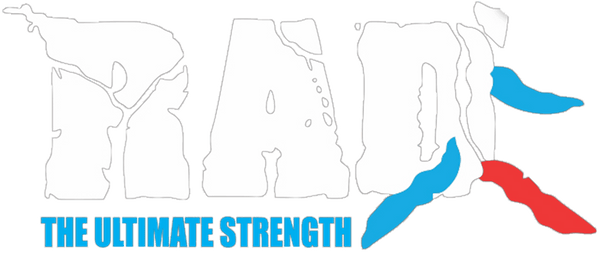
Why Every Weightlifter Needs a Reliable Weight Lifting Belt
Share
At RAD The Ultimate Strength, we understand the importance of unlocking your hidden strength as a weightlifter. That's why we're here to shed light on the crucial role a reliable Weight Lifting Belt plays in your lifting journey.
That’s why we’re here to shine a light on the importance of a good Lifting Belt. In this guide we’ll go into the reasons why every weightlifter should get a high quality Belt. Whether you’re a beginner or experienced lifter.
Understanding the Benefits of a Weight Lifting Belt
Enhancing Stability and Support
When lifting weights, stability and form is key. A Weight Lifting Belt is a stabilizer, supporting your core and lower back during heavy lifts. It gives you a solid base to stand on, reducing the risk of injury and maximizing your lifting.
Increasing Intra-Abdominal Pressure
One of the biggest benefits of wearing a Weight Lifting Belt is the intra-abdominal pressure. By tightening the belt around your waist, you increase the pressure in your abdominal cavity. This pressure is a natural Weightlifting Belt, supporting your spine and giving you extra strength for heavy lifts.
Protecting Your Lower Back
Weightlifting puts a lot of stress on your back. A Weight Lifting Belt helps reduce the stress on your back muscles by giving you external support. It acts as a physical barrier to prevent excessive spinal flexion and extension which can lead to injuries. By protecting your back a good Weight Lifting Belt lets you train more and with more confidence.
Improving Performance and Lifting Capacity
By giving you stability, support and protection a Weight Lifting Belt directly contributes to better performance and more lifting capacity. With the added confidence and safety of the belt you can focus on pushing yourself and beating your personal records. It’s a tool to unlock your hidden strength and take your lifting to new levels.
Choosing the Right Weight Lifting Belt
Material and Construction
When choosing a Weight Lifting Belt you should consider the material and construction. Look for belts made from high quality durable materials like Leather Weight Lifting Belt or nylon. These materials will give you the rigidity and longevity to withstand heavy lifting. Also make sure the belt has a strong buckle or fastening mechanism for a secure and comfortable fit.
Width and Thickness
The width and thickness of a Weight Belt is important. A wider belt gives you more support and stability especially for compound movements like squats and deadlifts. Go for a belt with a width of around 4 inches to get the most out of it. Also consider the thickness of the belt, a thicker belt will give you more rigidity and support.
Proper Sizing and Fit
To get the most out of a Belt it must fit right. Measure your waist and check the manufacturer’s sizing chart to get the right fit. The belt should be snug but not too tight, with room for adjustments and comfort during your lifts. Remember a good fit will give you the support and stability you need.
Maintaining Your Weight Lifting Belt
To keep your Powerlifting Belt lasting and performing well, maintenance is key. Here’s how:
Clean it:
Wipe down with a damp cloth after each use to remove sweat and dirt. Don’t use harsh chemicals that can damage the material.
Air dry:
Don’t put your Weight Lifting Belt in direct sunlight or heat. Let it air dry.
Store it:
Hang your belt in a cool, dry place or lay it flat to prevent creasing. Don’t fold or crumple the belt as it can compromise the shape and performance.
Check for damage:
Regularly check your Weight Lifting Belt for any signs of wear and tear. Check stitching, buckles and overall structure. If you see any damage, replace the belt to stay safe during lifts.
So, what are you waiting for? Get a great Weight Lifting Belt today and unleash your inner strength!


